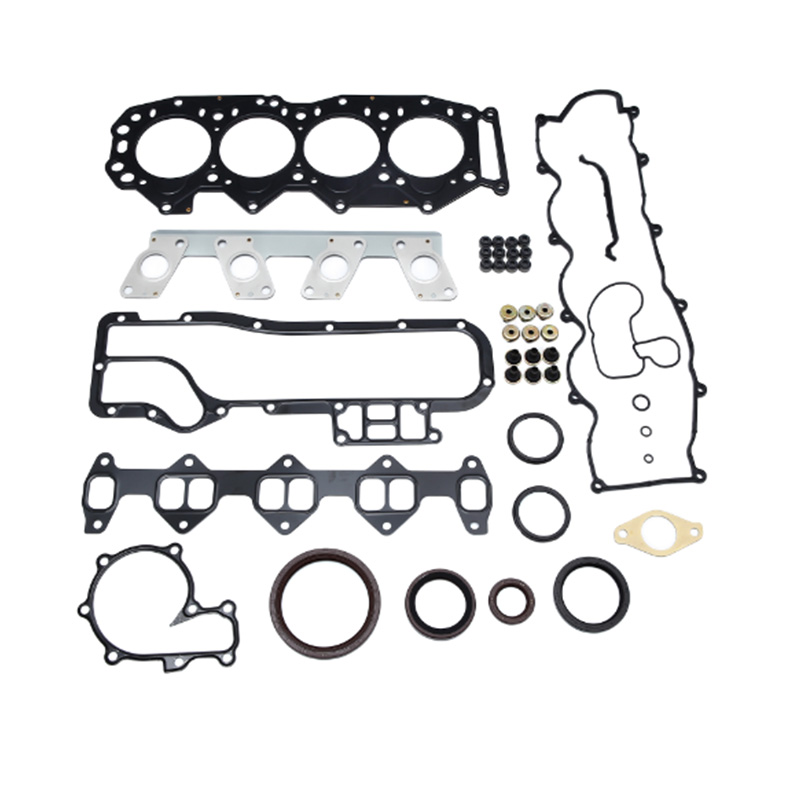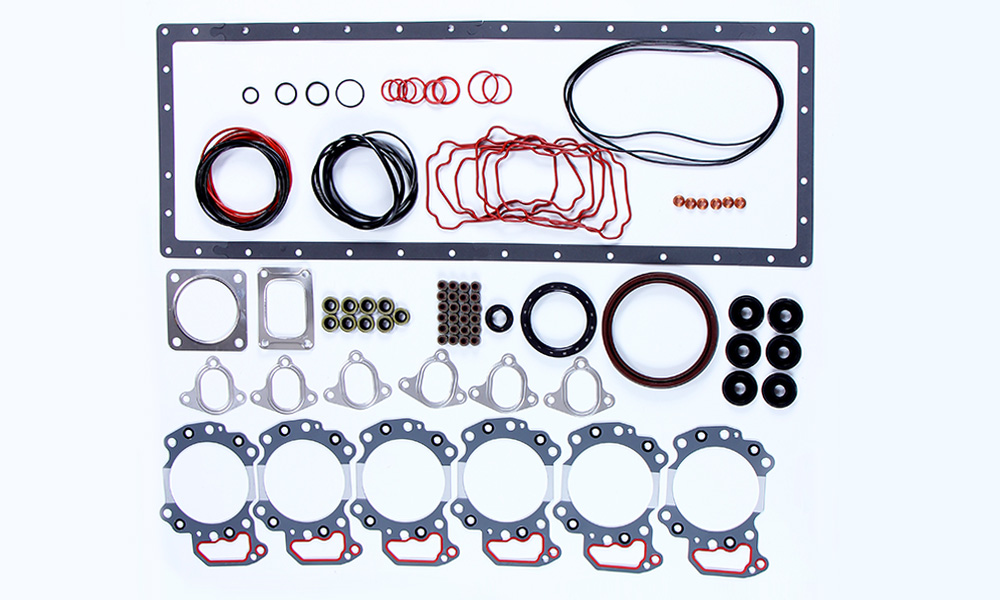What is an exhaust manifold gasket?
A vehicle's exhaust system relies heavily on the small but essential exhaust manifold gasket. The exhaust manifold gasket is a vital element in maintaining engine efficiency and safe operation. This article provides a detailed exploration of exhaust manifold gaskets, including their construction and operation, as well as their materials and failure mechanisms. By the end of this discussion, you will have a complete understanding of the critical importance of this component and how to detect its failure.

Definition and importance of exhaust manifold gasket
An exhaust manifold gasket acts as a sealing mechanism between the exhaust manifold and the engine cylinder head. The gasket is designed to prevent exhaust gases from escaping from the engine between the combustion chambers and the exhaust system. Engine performance and emission control would suffer significantly if the gasket failed to function properly.
Under severe operating conditions, the exhaust gasket provides a secure seal. The gasket must withstand exhaust temperatures in excess of 1,200°F (650°C), while managing both engine vibration and pressure fluctuations. A failed exhaust gasket will result in exhaust leaks and reduced engine efficiency, as well as damage to adjacent exhaust system components.
How does an exhaust manifold gasket work?
The principle of the exhaust manifold gasket
The exhaust manifold gasket acts as a sealing mechanism connecting the exhaust manifold to the engine block. Engine operation produces exhaust gases that need to be efficiently vented. The gasket allows a smooth flow of gases from the exhaust manifold to the exhaust pipe while preventing gases from leaking into the engine compartment.
Materials used in exhaust manifold gaskets
The service life and performance of exhaust manifold gaskets are highly dependent on the choice of materials. Common exhaust gasket materials include:
Multi-Layer Steel (MLS): Multi-Layer Steel is characterized by its strength properties and ability to withstand high temperatures and pressures.
Graphite: Graphite offers both the heat resistance and flexibility required for high-performance engine applications.
Composite materials: In older vehicles, composites are used because they offer cost efficiencies but reduced durability compared to today's materials.
Engine type and operating conditions determine which material is best suited to a particular application. For example, MLS gaskets are used in high-performance engines because these gaskets have excellent sealing properties combined with improved durability.

Common symptoms of a failed exhaust manifold gasket
The failure of an exhaust manifold gasket will lead to various performance and safety problems in your vehicle. The following indicators can help you detect a failed exhaust manifold gasket:
Exhaust gasket leak
A failed gasket produces an exhaust gas leak, which is one of the most obvious signs of gasket failure. The compromised gasket will produce a loud hissing or tapping noise coming from the engine compartment. The damaged gasket allows exhaust gases to escape, causing the noise. An untreated leak is likely to damage the exhaust manifold and possibly the entire engine.
Reduced engine power
When a gasket fails, the exhaust flow is interrupted, resulting in reduced engine power and slower acceleration. Your car will struggle to maintain speed and will experience delays when accelerating.
Burning smell or visible damage
An exhaust leak in the engine compartment can be identified by a burning smell. Distortion or cracking of the exhaust manifold may be visible if the exhaust leakage is severe.
Increased emissions
A faulty gasket will cause the vehicle to fail the emissions test. The escape of unburned fuel and exhaust gases through the leak creates more harmful emissions due to the failure of the gasket.
Causes of exhaust manifold gasket failure
Understanding the reasons for manifold gasket failure will enable you to take preventative action. The following is a list of the main causes of manifold gasket failure.
Heat and pressure
Throughout its life, the gasket is exposed to intense heat and pressure from the exhaust gases. The material will deteriorate, resulting in reduced sealing ability.
Improper installation
A seal will fail prematurely if it is installed incorrectly, for example, if the bolts are tightened below the manufacturer's specification.
Engine vibration
Significant engine vibration accelerates gasket deterioration. The gasket wears faster due to engine vibration, especially in high-performance or heavy-duty vehicles.
Corrosion
The gasket will deteriorate due to exposure to moisture and corrosive elements, eventually causing cracks and leaks.
When to replace exhaust manifold gasket
You should consider replacing the seal if you experience any of these symptoms:
1. Loud exhaust noise.
2. Reduced engine power.
3. A burning smell or visible damage.
4. Failed emissions tests.
You should address the problem immediately if you experience any of the symptoms described above.
Conclusion
Despite its small size, your vehicle relies heavily on the exhaust manifold gasket to function properly and maintain proper emissions control. Understanding the function of your exhaust manifold gasket, its signs of failure, and when to replace it will keep your engine running smoothly and prevent costly repairs.
WTA provides durable exhaust manifold gaskets designed specifically for your engine's requirements. Contact our team today for detailed information on our products along with strategies to maximize your performance results.

Hazards of Gasket Oil Leaks and Prevention Measures in Automotive Applications

Oil Seals in Cars: Their Function, How to Identify, and Replace Inferior Seals

Intake and Exhaust Gaskets: Function, Failure, and Maintenance

The Importance of Cylinder Head Gaskets: Key to Choosing High-Quality Products

Automotive Engine Overhaul Kits: A Comprehensive Analysis and Buying Guide
OEM&ODM
How do you make our business long-term and good relationship?
1. We keep good quality and competitive price to ensure our customers benefit,
2. We respect every customer as our friend and we sincerely do business and make friends with them. no matter where they come from.
Can you produce according to the samples?
Yes, we can produce by your samples or technical drawings. We can build the molds and fixtures.
What is your terms of delivery?
EXW, FOB
What is your terms of payment?
T/T 30% as deposit, and 70% before delivery. We'll show you the photos of the products and packages before you pay the balance.
What is your sample policy?
We can supply the sample if we have ready parts in stock, but the customers have to pay the sample cost and the courier cost.




STAY IN TOUCH WITH WTA
Have any questions or queries about our products? Please leave us a message here and our team will get back to you promptly.
Your inquiries, ideas, and collaboration opportunities are just a click away. Let's start the conversation.
